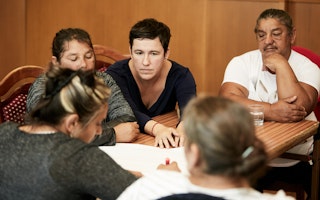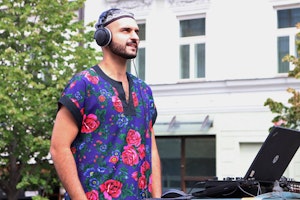The Myth of the Spanish Model of Roma Inclusion
By Ostalinda Maya Ovalle & Anna Mirga
“Things are different in Spain.” This is a common refrain when discussing Roma integration in Europe. Spain is held up as a model, and not just by media or government officials. Even some Roma activists point to programs in the country as a way forward. But this rosy picture ignores the historical and economic environment, as well as the vital role of Romani families. As Spain’s economic crisis and its effects take root, it’s time to break this myth.
Look at education. Spain receives high marks for enrolling Roma children into primary school but performs terribly when it comes to higher education. Only five percent of Roma students complete upper-secondary education—a statistic that is even more shocking when you consider that Spain is significantly behind less-developed European countries [PDF] like Czech Republic (30 percent), Hungary (22 percent), Romania (10 percent), or Bulgaria (nine percent). Roma students aren’t in the classrooms, and their history isn’t in textbooks: 500 years of Roma contributions to Spain fails to merit a single mention in school history books.
Although negative attitudes toward Roma might be higher in other countries, the Roma remain the most despised minority in Spain: 40 percent of the population would be disturbed if they had a Romani neighbor, and 25 percent would not allow their children to attend school with Romani students. This deep suspicion and mistrust carries over to the streets. Roma are 10 times more likely to be stopped by police for identification than those of a Caucasian appearance.
In contrast with Roma in Central and Eastern Europe, Spanish Roma are not an officially recognized ethnic minority in the country, and Roma civil society is for the most part in a pitiful state. After decades of state-funded service provisions through nongovernmental organizations, the much-needed voice of Roma organizations has been reduced to a mere whisper. A growing number of Roma university graduates find no incentive in engaging with the work of civil society.
Of course, there has been progress. But the myth of the “Spanish Roma inclusion model” blinds us to the most important point. It was not Roma-specific policies—like the 1989 Spanish Development Program or the Fundacion Secretariado Gitano’s ACCEDER employment program—that contributed the most to inclusion, but rather developments in Spain that had nothing to do with Roma.
In the transition from Franco’s dictatorship to democracy, the new Spanish constitution banned discrimination on ethnic or other grounds. Subsequently, new legislation was passed to repeal still existing discriminatory provisions towards Roma. Roma—along other excluded groups—now had the institutional backing to legally defend themselves and advance some of their rights as equal citizens.
In the 1980s Spain adopted a number of welfare policies such as universal health care coverage, compulsory basic education, and social housing designed to uplift the bottom layers of the society. After centuries of persecution and discrimination Spanish Roma found themselves living in a country that wanted to help all of its underprivileged. The welfare state helped to reduce mortality rates, increased life expectancy, improved levels of basic education, and gave hope to all Spanish citizens. This is single-handedly what has made the greatest difference for Spanish Roma.
During the late ’90s, until 2006, Spain benefited from a growing economy which reduced unemployment and improved living conditions for all. Roma also benefited from the economic boom, as they suffer today from the general economic downturn.
The final element which contributed to changes experienced by the Spanish Roma is hardly ever mentioned: the hard work and sacrifice that Romani families put towards making the most of the available opportunities. These are the families that opened the way for a Roma middle class in Spain. We are the children of people who, despite tremendous obstacles and discrimination, managed to improve their lives.
One of us, Ostalinda, is the daughter of world-renowned Flamenco dancer Mario Maya. Ostalinda’s father comes from a very modest background. He was raised in a cave without running water or electricity. His personal journey is one of hard work and sacrifice to secure a better upbringing for his three children. It was thanks to his perseverance and encouragement that Ostalinda managed to pursue her academic studies. With two degrees in anthropology and law, she has been working to defend the rights of Roma across Europe.
People like us are not the majority among Roma but we are a growing minority. We owe what we have and what we are to the hard work of our Romani parents and grandparents and not to projects done in the name of Roma.
The Spanish experience demonstrates that Roma projects alone cannot make a difference. The social distance between Roma and everyone else remains and can grow even bigger in a period of economic and social crisis. Roma-specific projects are only useful and sustainable if governments change the way they support all people, especially in the domain of equality, welfare provision, and economic development. This way everyone can get a chance. When real opportunity is provided to all, Roma in Spain are the living example that it can work.
This article was originally published in the Spanish newspaper El Mundo.
Ostalinda Maya Ovalle is a policy officer at the Open Society Justice Initiative.
Anna Mirga is a Roma activist from Poland, a PhD student at the Autonomous University of Barcelona, and a fellow with the Open Society Roma Initiatives Office.


